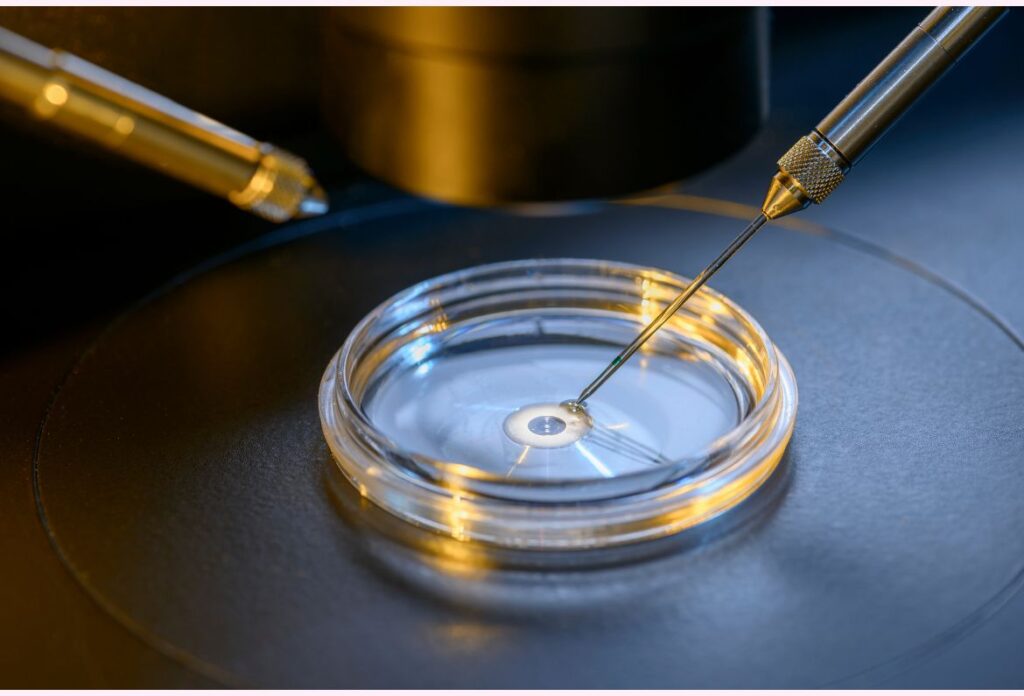In vitro fertilization (IVF) is a life-changing procedure that has brought hope to millions of couples worldwide. However, the complexity of the process often raises questions and concerns. Understanding the steps involved can help individuals feel informed and empowered as they embark on their journey. Let’s explore the IVF process step-by-step.
1. Initial Consultation and Evaluation

The journey begins with a thorough evaluation to assess fertility and determine the best course of action.
- Medical History Review: Includes a detailed analysis of factors affecting fertility.
- Diagnostic Tests: Blood tests, hormone levels, ultrasounds, and semen analysis provide essential insights.
- Individualized Plan: The results help create a tailored treatment plan to maximize the chances of success.
2. Ovarian Stimulation
Medications are used to stimulate the ovaries to produce multiple eggs.
- Hormonal Injections: Administered daily for 8-14 days to encourage follicle growth.
- Monitoring: Regular ultrasounds and blood tests track progress.
- Trigger Shot: A final injection is given to mature the eggs when the follicles are ready.
3. Egg Retrieval
A minimally invasive procedure to collect mature eggs.
- Timing: Scheduled approximately 34-36 hours after the trigger shot.
- Procedure:
- Performed under sedation.
- A needle guided by ultrasound aspirates the eggs from the follicles.
- Recovery: The process is quick, with minimal discomfort post-procedure.
4. Sperm Collection and Preparation
Sperm is collected on the day of egg retrieval or thawed from a previously frozen sample.
- Processing: The healthiest and most motile sperm are selected for fertilization.
5. Fertilization

The retrieved eggs are combined with sperm in the lab.
- Conventional IVF: Eggs and sperm are placed together in a petri dish to allow natural fertilization.
- ICSI (Intracytoplasmic Sperm Injection): A single sperm is injected directly into an egg to improve the chances of fertilization, especially in cases of male infertility.
- Embryo Development: Fertilized eggs are monitored as they grow into embryos over 3-5 days.
6. Embryo Transfer
A crucial step where the developed embryos are transferred into the uterus.
- Selection: The healthiest embryo(s) are chosen for transfer.
- Procedure:
- A thin catheter places the embryo(s) into the uterus under ultrasound guidance.
- The procedure is painless and takes just a few minutes.
- Post-Procedure: Avoid strenuous activities but resume most normal routines.
7. Luteal Phase Support
After the transfer, progesterone and other supportive medications are prescribed to enhance uterine receptivity.
- Duration: Continued until pregnancy is confirmed or as advised.
- Forms: Includes oral tablets, vaginal suppositories, or injections.
8. The Two-Week Wait
This is a critical period of waiting and self-care.
- Self-Care Tips: Eat healthily, avoid stress, and limit physical exertion.
- Pregnancy Test: A blood test (beta hCG) is conducted about two weeks after the transfer to confirm pregnancy.
What If It Doesn’t Work?
An unsuccessful cycle can be emotionally challenging, but it’s not the end of the road. Next steps may include:
- Reviewing the treatment protocol and making adjustments for a future cycle.
- Considering additional techniques like assisted hatching or genetic testing.
- Seeking support through counseling or support groups to navigate the emotional journey.
Conclusion
IVF is a detailed and dynamic process designed to overcome various fertility challenges. Each step is meticulously planned to increase the chances of success, making it a hopeful option for many individuals and couples. By understanding what happens during an IVF procedure, you can approach the journey with confidence and clarity
Dr. Rana Mondal’s expertise and insights in the field of IVF have helped many couples navigate their journey towards parenthood with hope and resilience.

No Comments